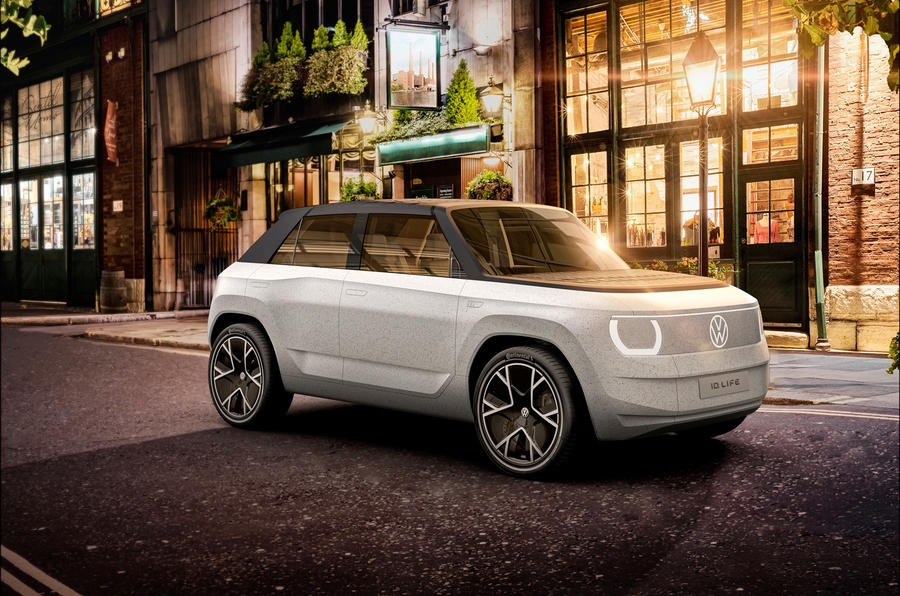The Volkswagen ID Life concept, revealed at the Munich motor show, has been a long time coming.
The firm’s bosses have been talking for years about the intent and desire to produce an entry-level, €20,000 (£17,000) electric vehicle - a true electric people's car, if you will. But the challenge of doing so has been immense.
So the fact that the ID Life exists, albeit in concept form and with three years still to go before it enters production, is a big deal. This is Volkswagen’s bid to make a truly affordable EV. And certainly, if the specs of the concept are matched by a production car, this should be very competitive for its price.
What’s notable is that the ID Life isn’t just a squashed ID 3, showing just how much development the Volkswagen Group has done to the MEB Entry platform that will underpin it and sister cars from Cupra (seen as the Urban Rebel concept) and Skoda. The wheelbase is shorter, while the motor has been moved from the rear to the front axle, which Volkswagen claims makes for a better design when it comes to a compact crossover.
Also interesting is how important software and connectivity will be to the production version of the ID Life (likely to be called the ID 2 in production). Volkswagen has already rolled out over-the-air software updates for the ID 3 and ID 4, and that’s likely to become a key way of selling features and so on in the future. Volkswagen has talked about such concepts with its forthcoming Project Trinity high-end autonomous cruiser, and it’s significant that such ideas will extend to the entry level.
So expect the ID Life to be offered with a very limited range of options, with extra features then offered as downloadable extras. That will help Volkswagen to keep down the production price, by lowering the number of parts and so on that are needed – especially when you add in the economies of scale that come from producing 500,000 cars per year on the MEB Entry platform.
Of course, that means that £17,000 headline price might not be all its cracked up to be, but Volkswagen is aiming to prove that it will offer more flexibility and freedom to buyers. You will have to buy only the features you really need, for one thing, and Volkswagen hopes that it will help resale prices, because you won’t be hit if you don’t add an option that becomes desirable in the used market.
Effectively, it’s going to require a change of mindset from buyers - but one that largely reflects the changing car market. And if the ID Life is as significant as anticipated, expect it to be a key part of that car market from 2025 onwards.
READ MORE
ID Life concept previews new ID 2 EV at Munich motor show
Volkswagen plots hot ID Life GTX version of new compact crossover


























Join the debate
Add your comment
So if all the extras are already built into the car and no customers pay to activate them VW will lose money on every car
Couldn't agree more, logical nonsense. The only way it saves cost is by reducing the complexity of manufacturing by having one trim. It is really a way of being able to offer a car with a very low price, and then encouraging people to pay for upgrades. I am not saying there is anything wrong with that as a strategy / sales tool, but it most definitely not reducing the number of parts, it is increasing them - at least on base cars.